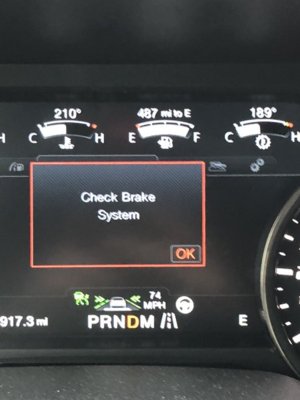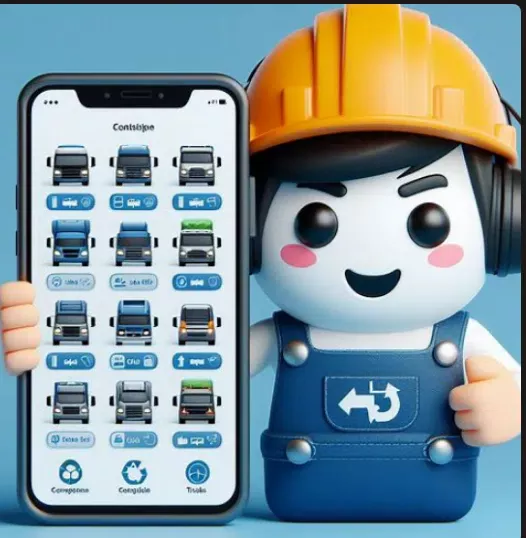To check your brake system, start by visually inspecting the brake pads and rotors for any signs of wear or damage. Then, check the brake fluid level and ensure it is within the recommended range.

Credit: www.fordraptorforum.com
Importance Of Regular Brake System Checks
Regular brake system checks are essential for ensuring safety on the road. By conducting routine inspections, you can prevent costly repairs and potential accidents. A complete examination of the brake system involves assessing the brake pads, rotors, and brake fluid levels. It is crucial to maintain a consistent maintenance schedule and address any issues promptly. Additionally, monitoring for warning signs such as squeaking or grinding noises is vital.
Credit: fordcmaxhybridforum.com
Signs Of Brake System Issues
If you notice squeaking or grinding noises when you apply the brakes, it might indicate a problem with your brake system. Additionally, a soft brake pedal that feels spongy or goes all the way to the floor can also be a sign of brake issues. These signs should not be ignored as they could indicate worn-out brake pads, a leaking brake fluid, or even a problem with your brake master cylinder. Addressing these issues immediately is crucial to ensure your safety on the road. If you experience any of these signs, it’s recommended to have your brake system checked by a certified mechanic as soon as possible for proper diagnosis and repair.
Steps To Check Brake System
Performing regular maintenance on your vehicle’s brake system is crucial for your safety on the road. Below are a few steps to help you check the brake system:
1. Visual Inspection of Brake Pads: Start by visually inspecting the brake pads. Look for any signs of wear and tear, such as thinning or unevenness. If the pads are less than 3mm thick, it’s time to replace them.
2. Checking Brake Fluid Level: Locate the brake fluid reservoir under the hood of your car. Ensure that the fluid level is between the minimum and maximum marks. If it’s below the minimum mark, you may have a leak or low brake pad levels.
Remember, regular brake system maintenance is crucial to ensure optimal performance and your safety on the road. If you are unsure about any aspect of checking or maintaining your brake system, consult a professional mechanic.
Diy Brake System Check
Tools Needed: Jack, jack stands, lug wrench, flashlight, brake fluid, clean cloth.
Step-by-Step Procedure:
1. Lift the car with the jack and secure it on jack stands.
2. Remove the wheels using the lug wrench and inspect the brake pads and rotors for wear.
3. Check the brake fluid level in the reservoir and top up if necessary.
4. Inspect the brake lines for any signs of leaks or damage.
5. Test the brake pedal for firmness and responsiveness.
6. Reassemble the wheels and lower the car to the ground.
7. Take a short test drive to ensure the brakes are functioning properly.
When To Seek Professional Help
To ensure your safety on the road, it’s crucial to regularly inspect your brake system. If you notice any warning signs such as squeaking noises or a soft brake pedal, seeking professional help promptly is essential. A qualified mechanic can diagnose any issues and perform the necessary repairs to keep your brakes in optimal condition.
|

Credit: www.reddit.com
Frequently Asked Questions On How To Check Brake System
How Do I Know If My Brake System Is Bad?
Signs of a bad brake system include squealing, grinding, or vibration when braking. Also, a spongy brake pedal or the vehicle pulling to one side when braking. It’s important to have a professional inspection if any of these symptoms occur.
How Do You Test A Braking System?
To test a braking system, press the brake pedal firmly while driving at a safe speed to check if the car slows down or stops smoothly. Listen for any unusual noises or vibrations, and observe if the car veers to one side.
If any issues are noticed, consult a professional mechanic for inspection and repairs.
How Do I Check My Brakes Myself?
To check your brakes, follow these steps: 1. Park your vehicle on a level surface and engage the parking brake. 2. Visually inspect the brake pads and rotors for wear or damage. 3. Take a test drive to listen for any unusual noises or vibrations when applying the brakes.
4. Check for any leaks in the brake fluid by examining the brake lines. 5. If you notice any issues, take your vehicle to a professional mechanic for further inspection and repair.
Why Does My Car Keep Saying Check Brake System?
The “check brake system” warning could indicate low brake fluid, worn brake pads, or a malfunctioning sensor. Get it inspected to ensure your safety and prevent further damage.
Conclusion
Regularly checking your brake system is crucial for safe driving. By following the simple steps outlined in this guide, you can ensure that your brakes are in good working condition. Remember, it’s always better to be proactive than reactive when it comes to the safety of yourself and others on the road.
So, take the time to check your brakes and enjoy peace of mind knowing that you are prioritizing safety.
{ “@context”: “https://schema.org”, “@type”: “FAQPage”, “mainEntity”: [ { “@type”: “Question”, “name”: “How do I know if my brake system is bad?”, “acceptedAnswer”: { “@type”: “Answer”, “text”: “Signs of a bad brake system include squealing, grinding, or vibration when braking. Also, a spongy brake pedal or the vehicle pulling to one side when braking. It’s important to have a professional inspection if any of these symptoms occur.” } } , { “@type”: “Question”, “name”: “How do you test a braking system?”, “acceptedAnswer”: { “@type”: “Answer”, “text”: “To test a braking system, press the brake pedal firmly while driving at a safe speed to check if the car slows down or stops smoothly. Listen for any unusual noises or vibrations, and observe if the car veers to one side. If any issues are noticed, consult a professional mechanic for inspection and repairs.” } } , { “@type”: “Question”, “name”: “How do I check my brakes myself?”, “acceptedAnswer”: { “@type”: “Answer”, “text”: “To check your brakes, follow these steps: 1. Park your vehicle on a level surface and engage the parking brake. 2. Visually inspect the brake pads and rotors for wear or damage. 3. Take a test drive to listen for any unusual noises or vibrations when applying the brakes. 4. Check for any leaks in the brake fluid by examining the brake lines. 5. If you notice any issues, take your vehicle to a professional mechanic for further inspection and repair.” } } , { “@type”: “Question”, “name”: “Why does my car keep saying check brake system?”, “acceptedAnswer”: { “@type”: “Answer”, “text”: “The \”check brake system\” warning could indicate low brake fluid, worn brake pads, or a malfunctioning sensor. Get it inspected to ensure your safety and prevent further damage.” } } ] }